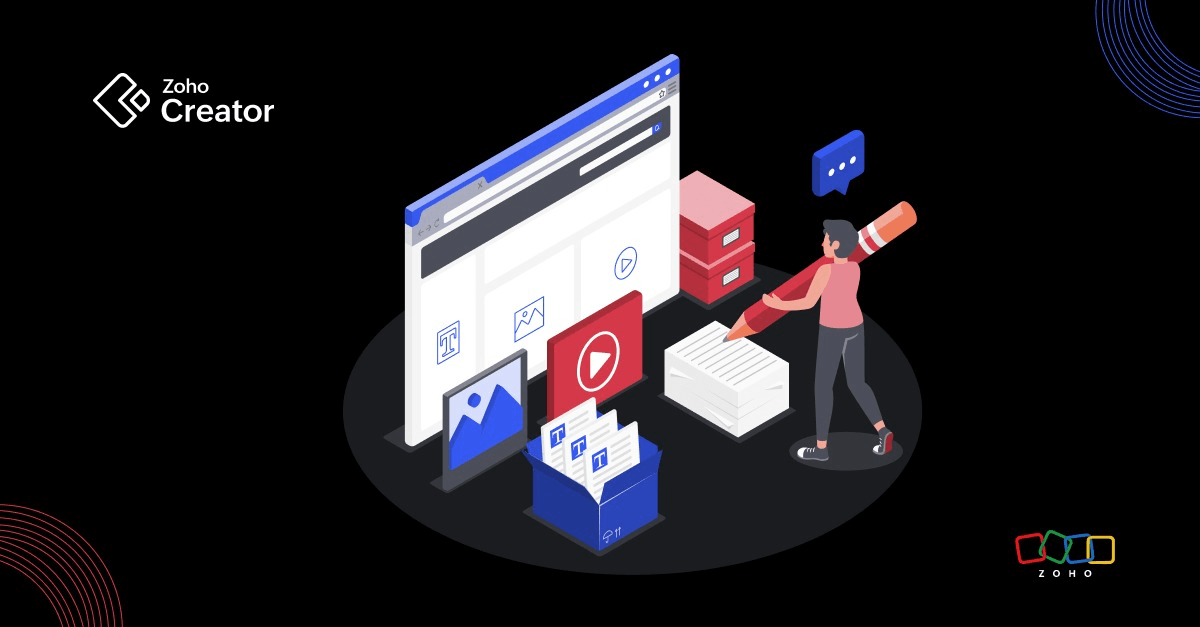- HOME
- Know Your Tech
- The digital workplace: Preparing for the future of work
The digital workplace: Preparing for the future of work
- Last Updated : April 20, 2023
- 3.9K Views
- 4 Min Read
A digital workplace is a system of new technology integrations and improved processes which facilitate efficiency, flexibility, and collaboration within a business. According to a report by CMSWire, 76% of organizations from various sectors and countries consider the move to a digital workplace to be a high priority. However, only 14% of these organizations have fully actualized their digital workplaces. This gap between awareness and implementation is a result of enterprises being unaware of what it means to cultivate a digital workplace, and how exactly it can be done.
As evolving technology shapes markets and individual behavior, a digital workplace will be key to preparing your organization for the future of work.
The evolution of the digital workplace
A digital workplace is an environment that facilitates connectivity amongst employees, and provides them with instant access to everything they need. A digital workplace is a logical corollary to the overall digital transformation underway within an organization—which is a product of integrating emerging technology into their operational DNA, while keeping the focus on employees, consumers, and business processes.
Key features
Now let’s identify the four characteristics your digital workplace should have in order to be successful:
Inclusive
An inclusive digital workplace should be holistic, open, and simple. When we talk about a digital workplace being holistic, it refers to going beyond the intranet and its tools, to encapsulate productivity and connectivity tools, business systems, and the physical workspace. This allows enterprises to take a huge leap towards making their organizations highly efficient and productive.
With an open digital workplace, information and ideas can freely flow through the entire workforce, without the common restrictions found in traditional organizational structures. This enables high levels of employee engagement, and increases their satisfaction at work.
Lastly, digital workplaces are all about simplifying processes and workflows to flatten the learning curve, and increase the efficiency of your employees. If these three criteria are met then your digital workplace can be truly inclusive.
Mobile
With the world becoming increasingly global and online, it’s impractical to expect your employees to be restricted to a traditional desk setup to do their work. They need to be provided with tools to facilitate flexibility in terms of where, how, and when they work. Hence, digital workplaces must enhance mobility and enable employees to perform effectively from anywhere, and at any time.
Connected
Social media has become an important aspect of our lives, and it has changed the way we connect with each other. Your employees also bring these expectations into the workplace, and expect more connectivity with their colleagues. As such, a digital workplace should reinforce connections by enabling a hierarchy-free platform to share ideas, opinions, and information.
Smart
New improvements in smart technology, like AI and machine learning, are being incorporated in various industries to facilitate improvements. Moreover, the mindset of workers is also slowly shifting to ideate more use cases for smart tech. Digital workplaces must create an environment where smart technology and smart employees can come together to create smart business processes.
While planning your organization’s digital workplace strategy, ensure that it covers these key features for a successful workplace transformation. This will prove vital for your organization’s success in the new global work culture of remote working, which has been catalyzed by the coronavirus pandemic.
The digital workplace is going to play a significant, if not the most important, role in facilitating your employees to continue working effectively, and to ensure that your business is able to sustain itself and thrive in this changing world.
Let’s take a look at some of the benefits that a digital workplace can bring to your organization:
Benefits for your organization
Improved results: Digital workplaces increase the efficiency and productivity of employees by empowering them with tools to succeed in the digital era.
Attract and retain talent: A digital workplace facilitates flexibility by providing provisions, such as working from home. This enables employees to be more engaged with their work, and higher employee engagement levels have been observed to improve employee retention by 87%. Hence, digital workplaces can be crucial to attracting and retaining the right talent for your organization.
Benefits for your employees
- Employee engagement and satisfaction: A digital workplace improves employee engagement by providing them with self-guided learning opportunities, incentivized operations, and other platforms in an open and inclusive environment. Moreover, digital workplace initiatives, such as installing social media tools, also improve employee satisfaction. These factors are vital to your employees’ productivity and performance, which can be reinforced with a digital workspace.
- digital The modern day workforce prefers to have simpler and faster collaboration tools, such as instant messaging, in contrast to more traditional methods, like emailing. A digital workplace can cater to these employee expectations, and improve their collaborative efforts.
Benefits for your customers
- Better customer experience: By encompassing essential techniques for collaboration, analytics, improved efficiency, and growth, digital workplaces enable your employees to deliver better service to customers. And it also facilitates the implementation of new ideas and innovations, which can significantly improve customer experience.
These are just a few benefits that organizations have experienced after cultivating a digital workplace for their employees. By understanding them, you can begin to strategize the changes and technological introductions needed to create a digital work environment for your own organization. And though it can seem like a massive undertaking, it’s important to understand that this digital transformation can be a step-by-step initiative, and not a sudden upheaval. By taking the first step towards developing a digital workplace, you can instill the right confidence in your employees for the changes to come.
In this regard, low-code platforms can provide you with a successful start. They empower your employees to take more control over their work processes, by self-developing business applications. Moreover, these applications can effectively automate manual processes, and further develop opportunities for digital transformation.
Low-code can be the starting point for transforming your business into a truly digital workplace—simplifying implementation efforts, incentivizing employee participation, and encouraging open communication across the organization.
 Sejal Dattani
Sejal DattaniSejal Dattani is a Senior Marketing Analyst at Zoho. She likes to stay on top of the latest marketing trends and is always on the lookout for new ways to reach and engage audiences. Also, a young mother who engages her kid with DIY activities and is passionate about early childhood learning. When she is not planning marketing campaigns, Sejal spends her time cooking, reading, and fussing over home decor.



